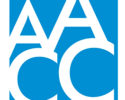Report roundup
By AACC 21st Century Center Staff
January 24, 2019
A monthly roundup of reports of interest to the community college sector.
Here are three reports you should know about this month.
- In fall 2010, more than 360,000 students transferred from a community college to a four-year institution. Eight percent transferred to a selective (competitive) institution. How did they do? A report from the Jack Kent Cooke Foundation reveals that “community college students who transfer to selective institutions are more likely to be enrolled one year after matriculation and more likely to earn their bachelor’s degree than students who transfer elsewhere.” In fact, their one-year retention rates are higher than those who transfer from other four-year institutions. Three-quarters of community college students who transfer to a selective institution receive their bachelor’s degree, compared to 53 percent who transfer to less competitive schools. Another finding: students who transfer to more selective institutions are less likely to have earned an associate degree before transferring than those who transfer to less selective institutions.
- In fiscal year 2017, about 42 percent of expenses at public two-year colleges went toward instruction, compared to 28 percent at public four-year institutions, a U.S. Education Department (ED) report shows. About 17 percent of public two-year colleges’ expenses were for institutional support and 11 percent were for student services, compared to 8.5 percent and 4.8 percent, respectively, at public four-year colleges and universities. Public two-years spent slightly more on academic support, too: 8.7 percent versus 8.3 percent. Where did public four-years spend more? Research, which comprised about 12 percent of expenses, compared to .1 percent at public two-years.
- About one-quarter of U.S. community colleges are expected to “internationalize” their programs and activities by 2029, up from about 11 percent that currently do so, according to a new report from Michigan State University’s International Business Center. Over the past decade, the percentage of community colleges that have added an international component to their programs has increased from 4.5 percent in 2009, to 7.1 percent in 2014, to 11.2 percent this year. It’s projected to increase to 17.6 percent by 2024 and to 24.1 percent by 2029. Among internationally oriented programs, international business is the most popular at community colleges (offered by an estimated 59 percent of colleges).



